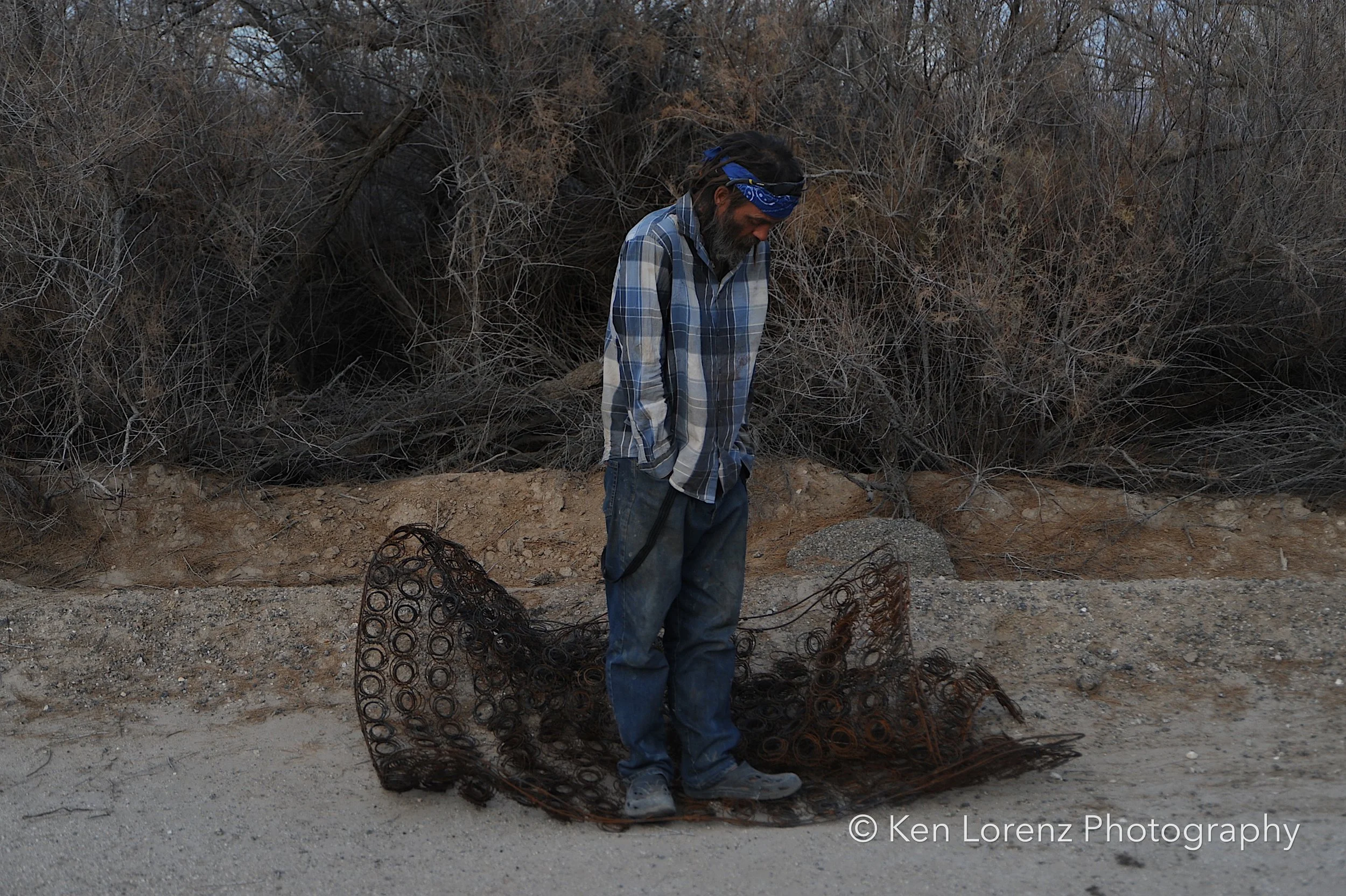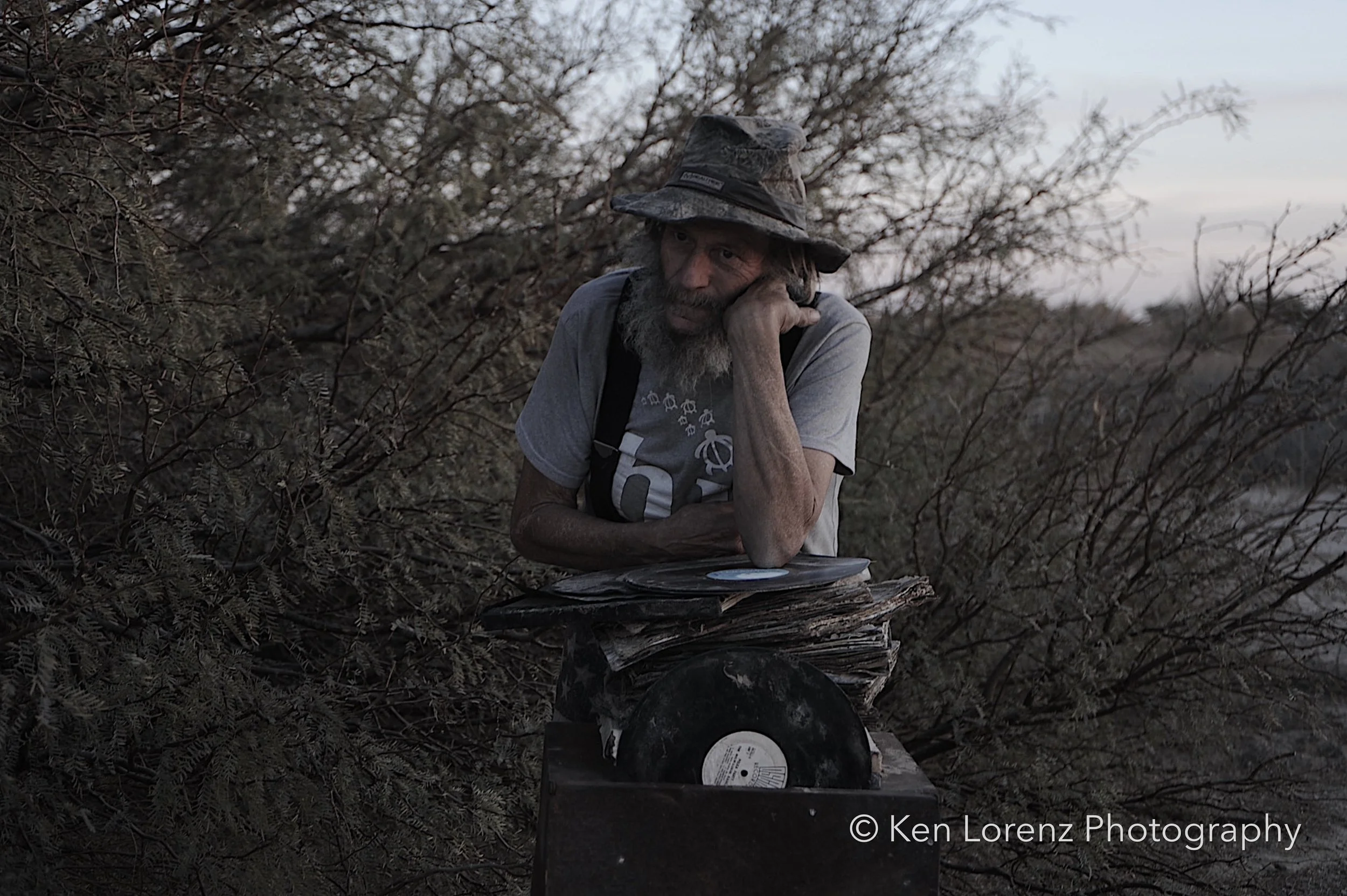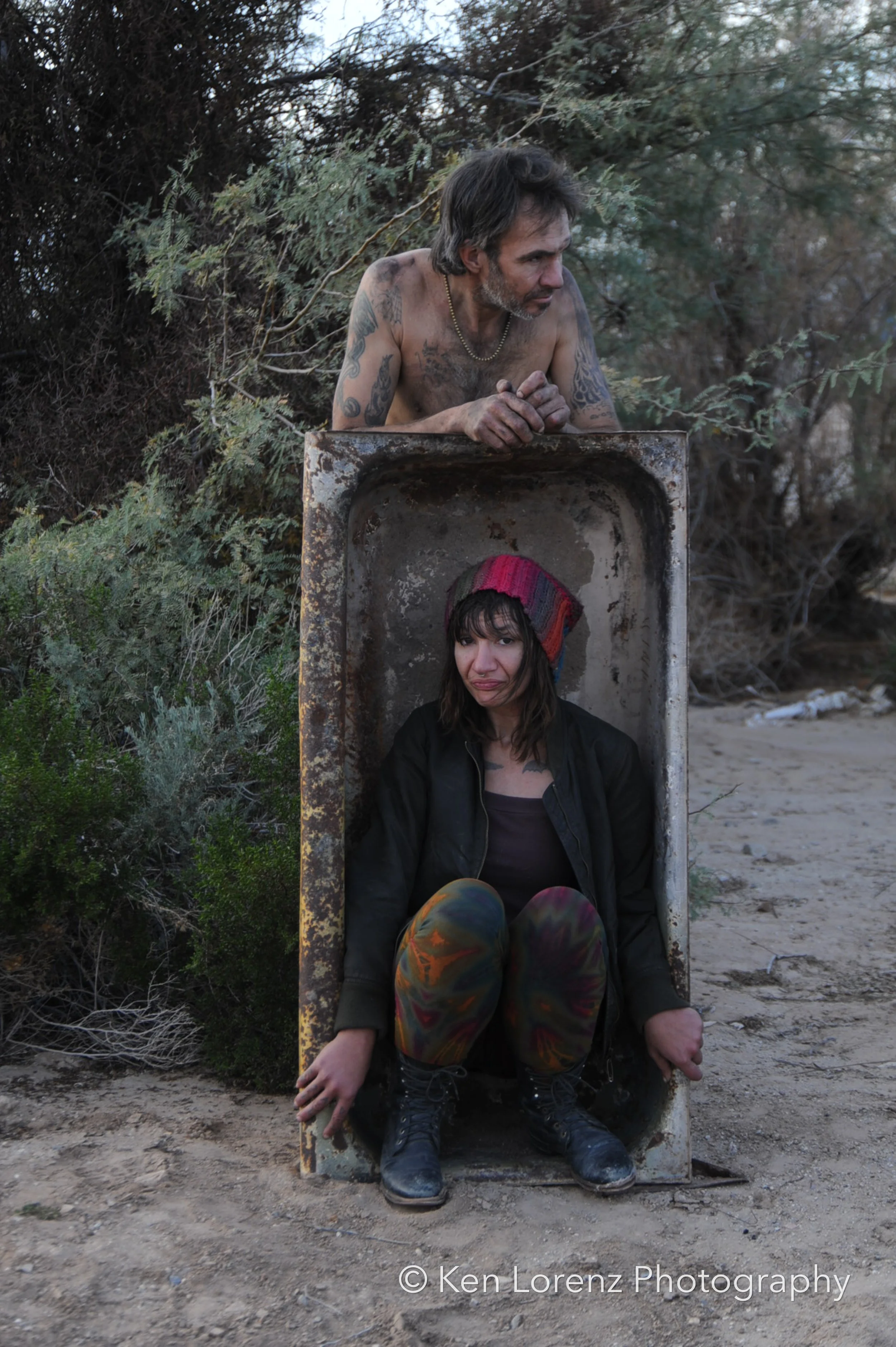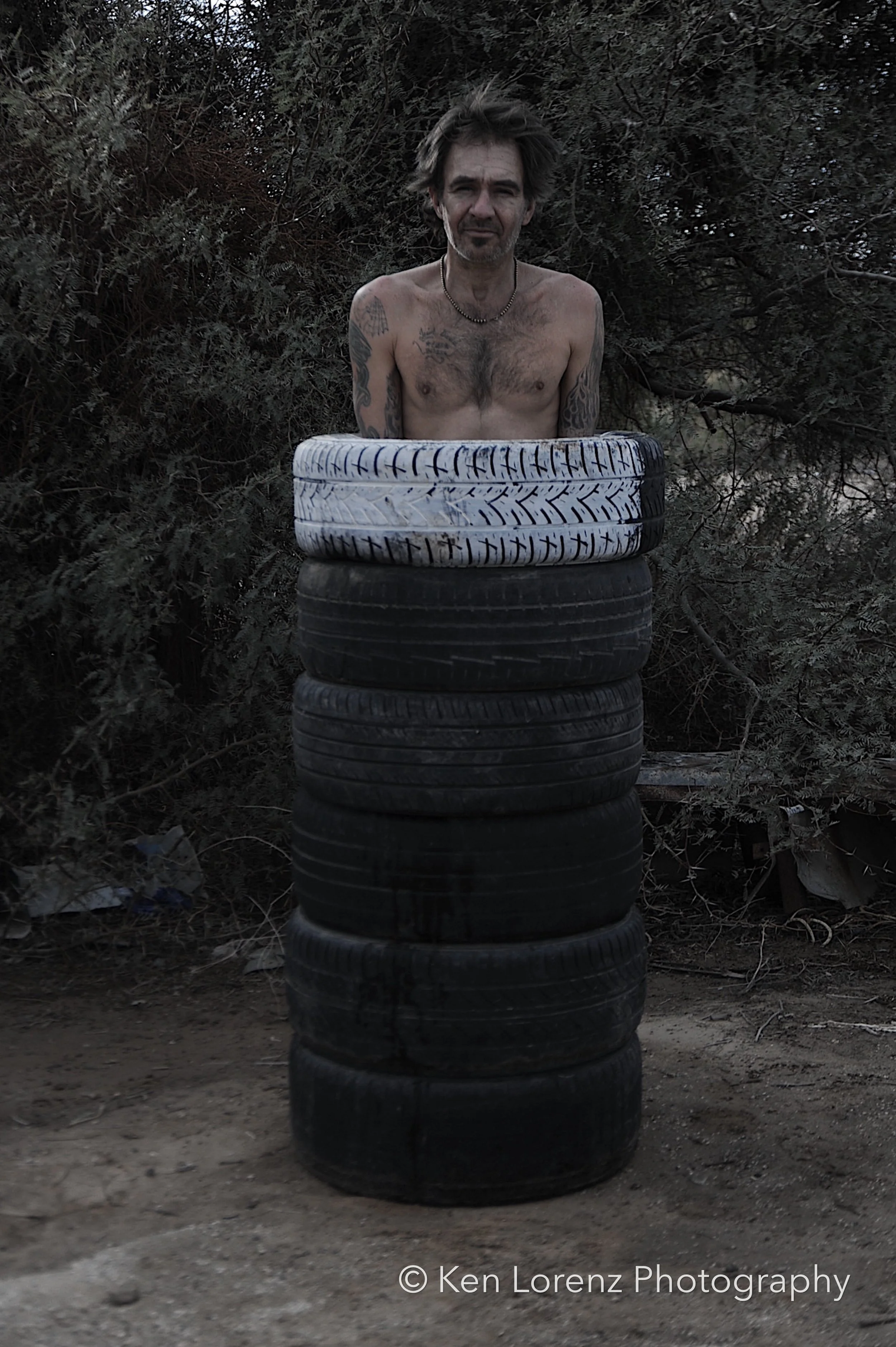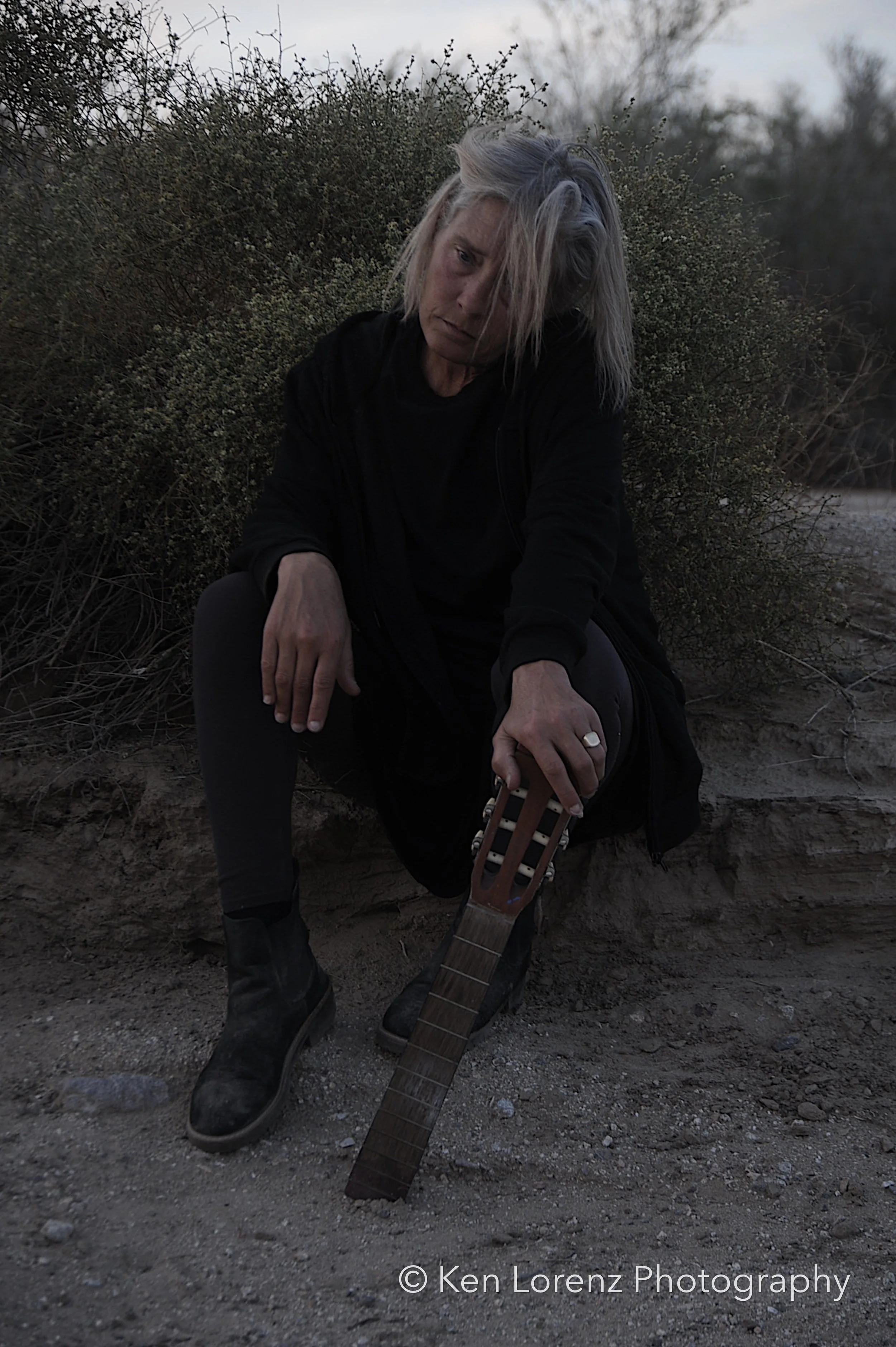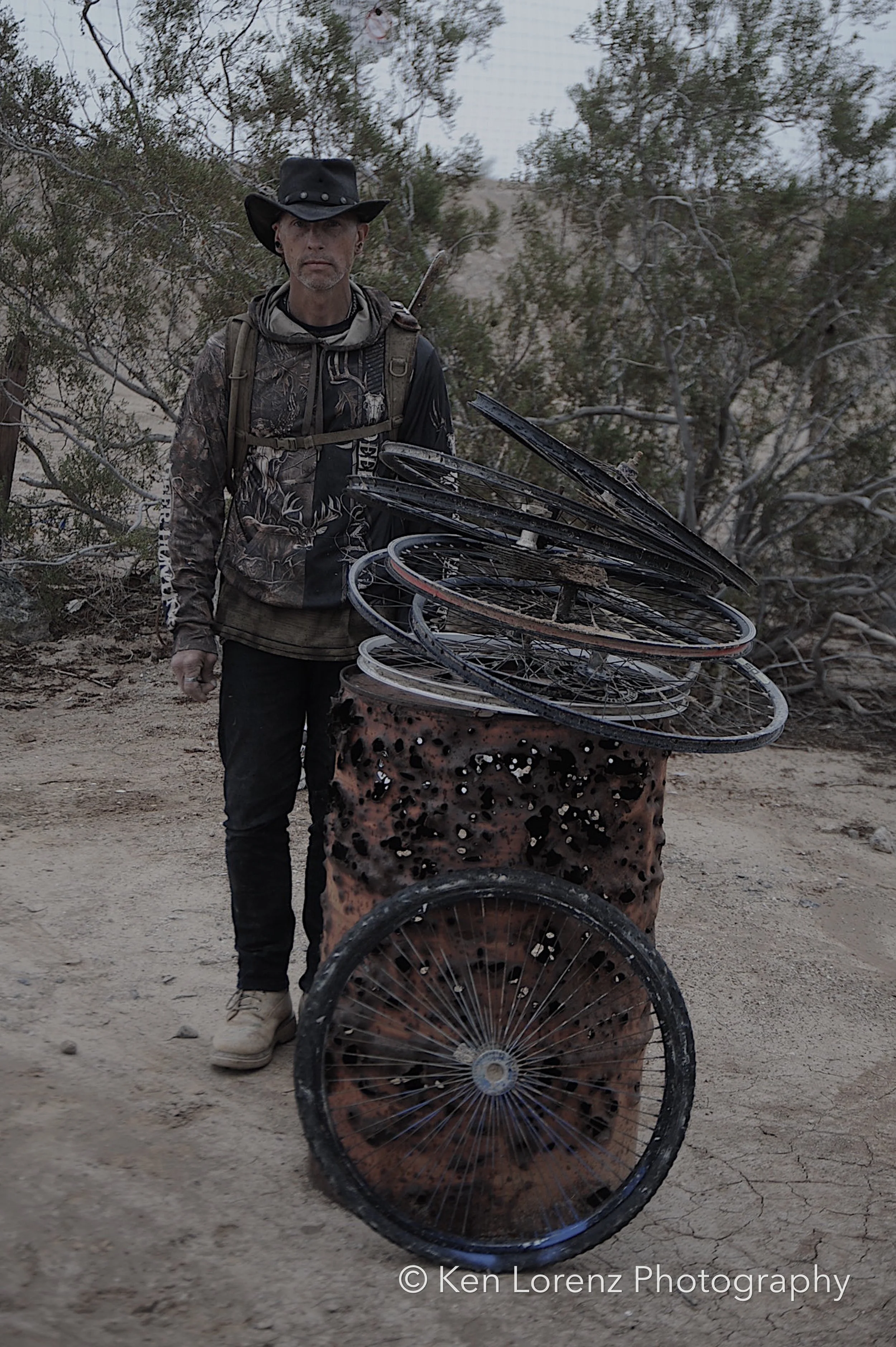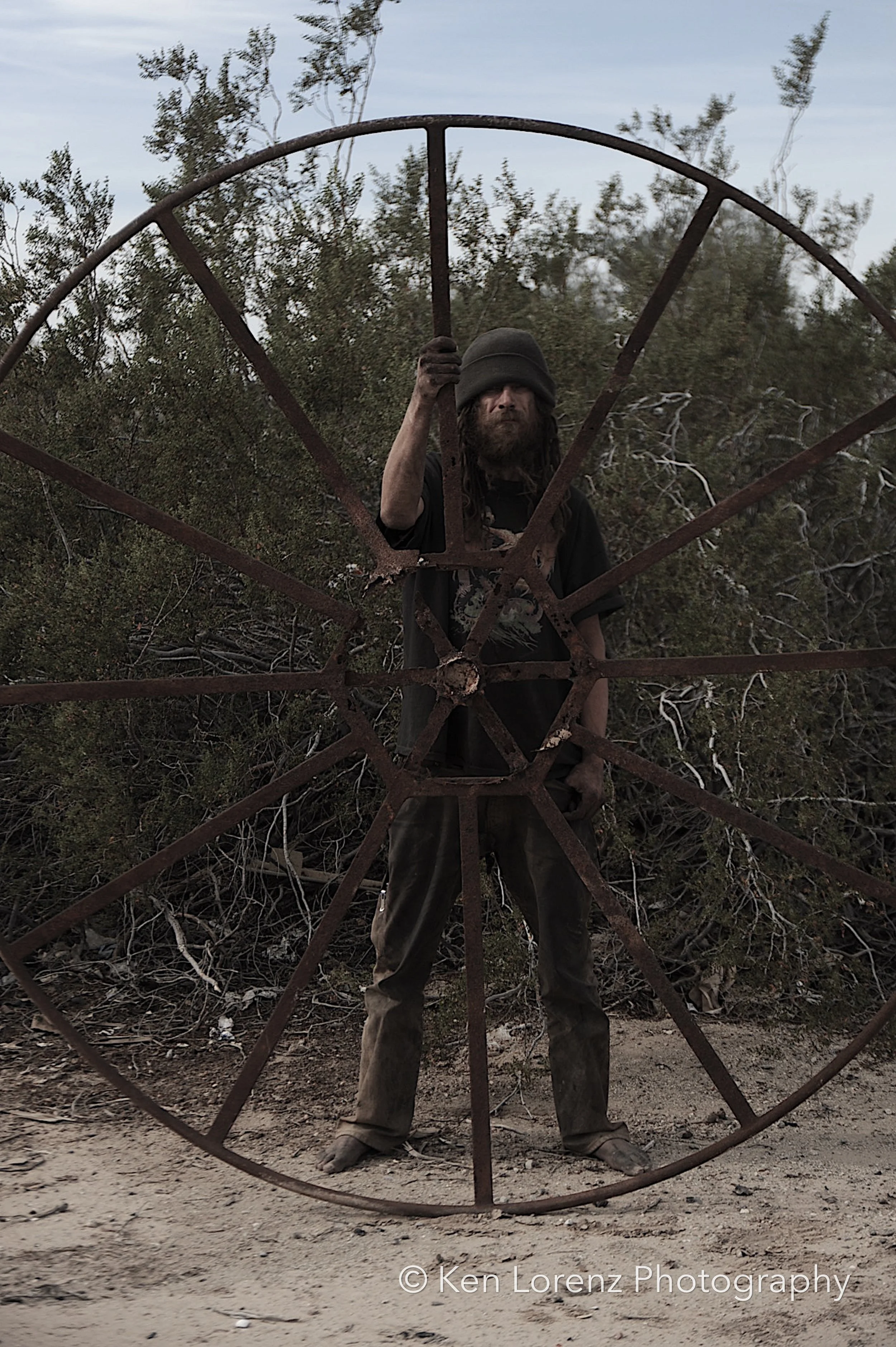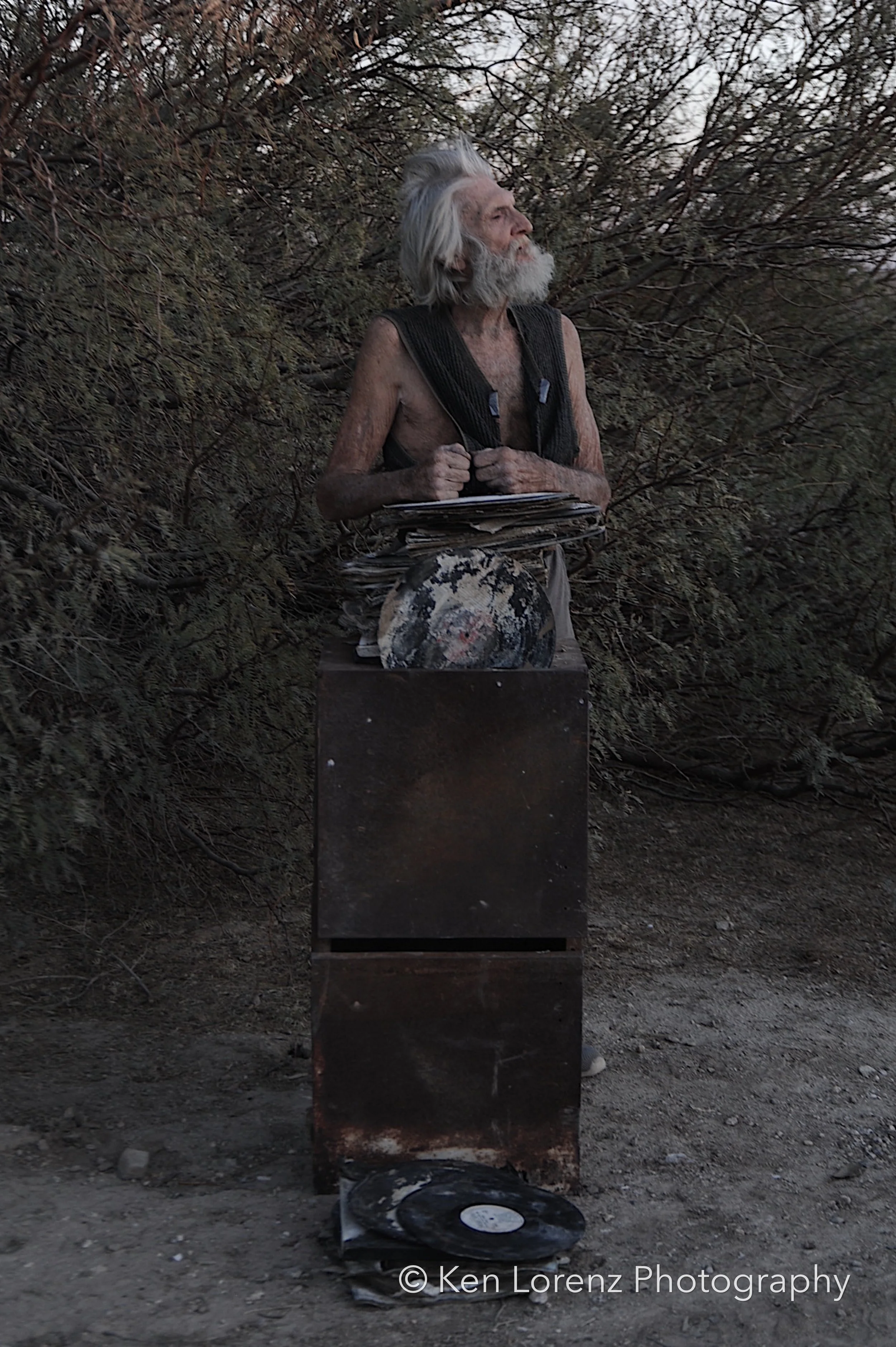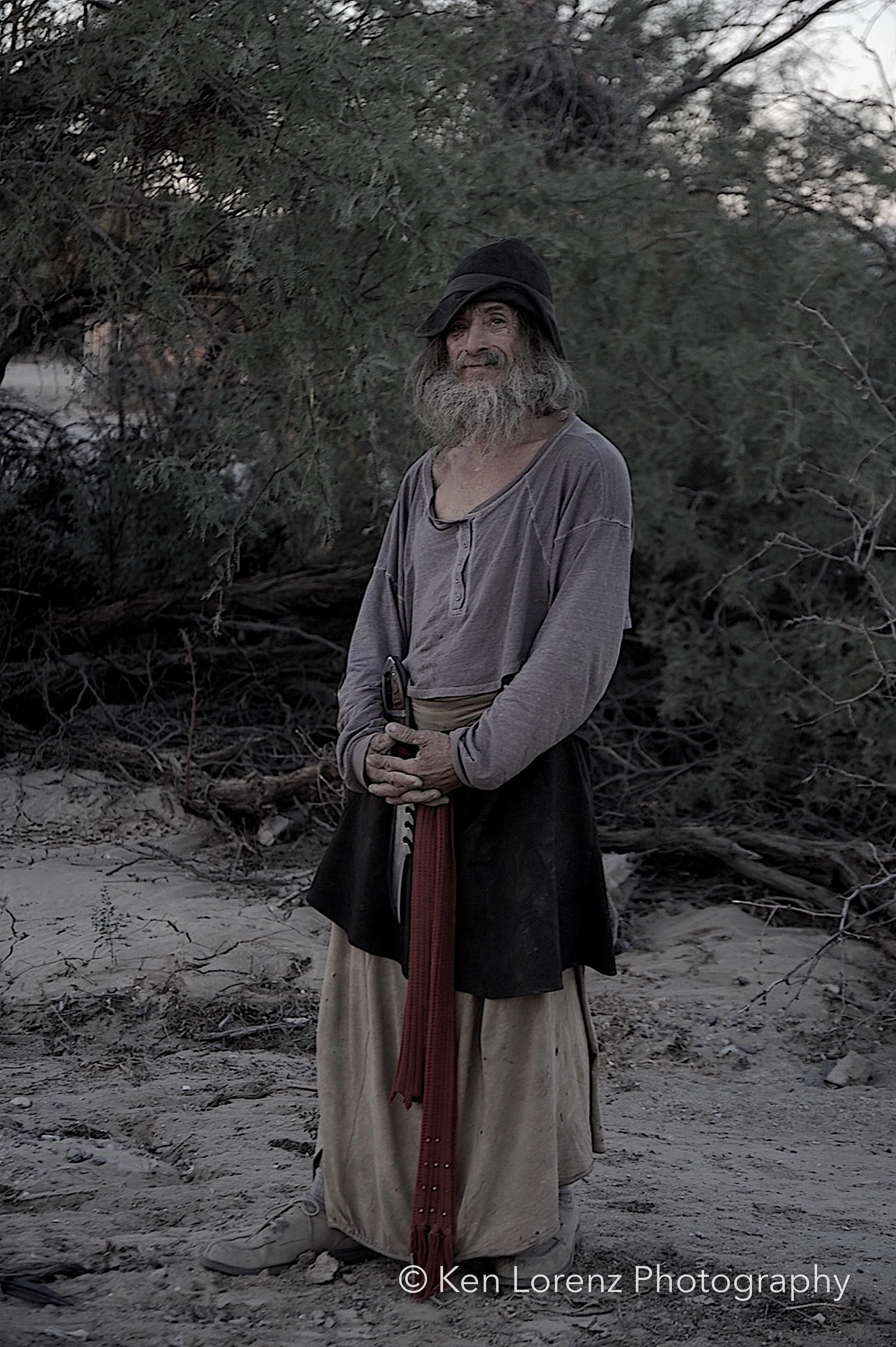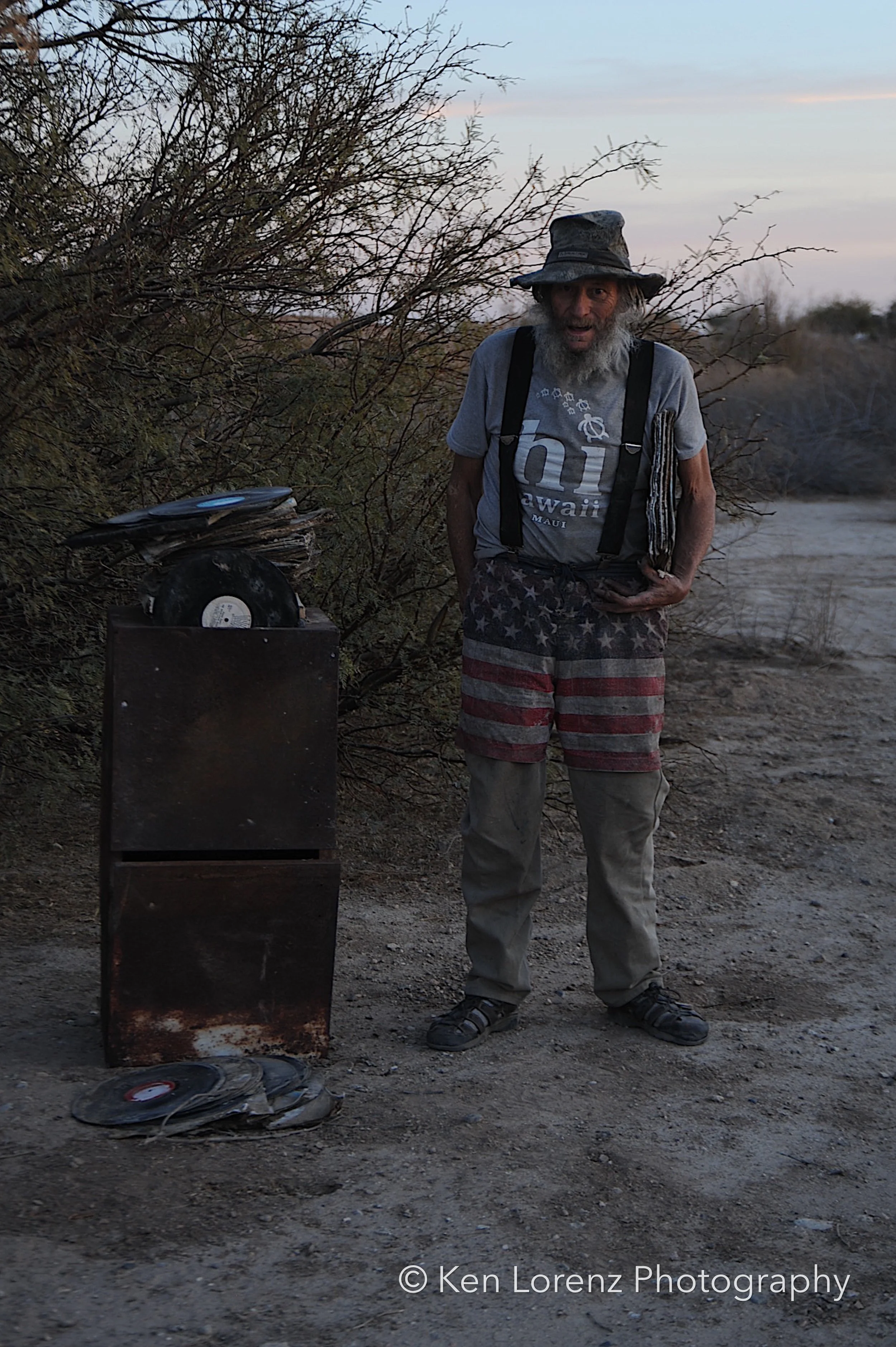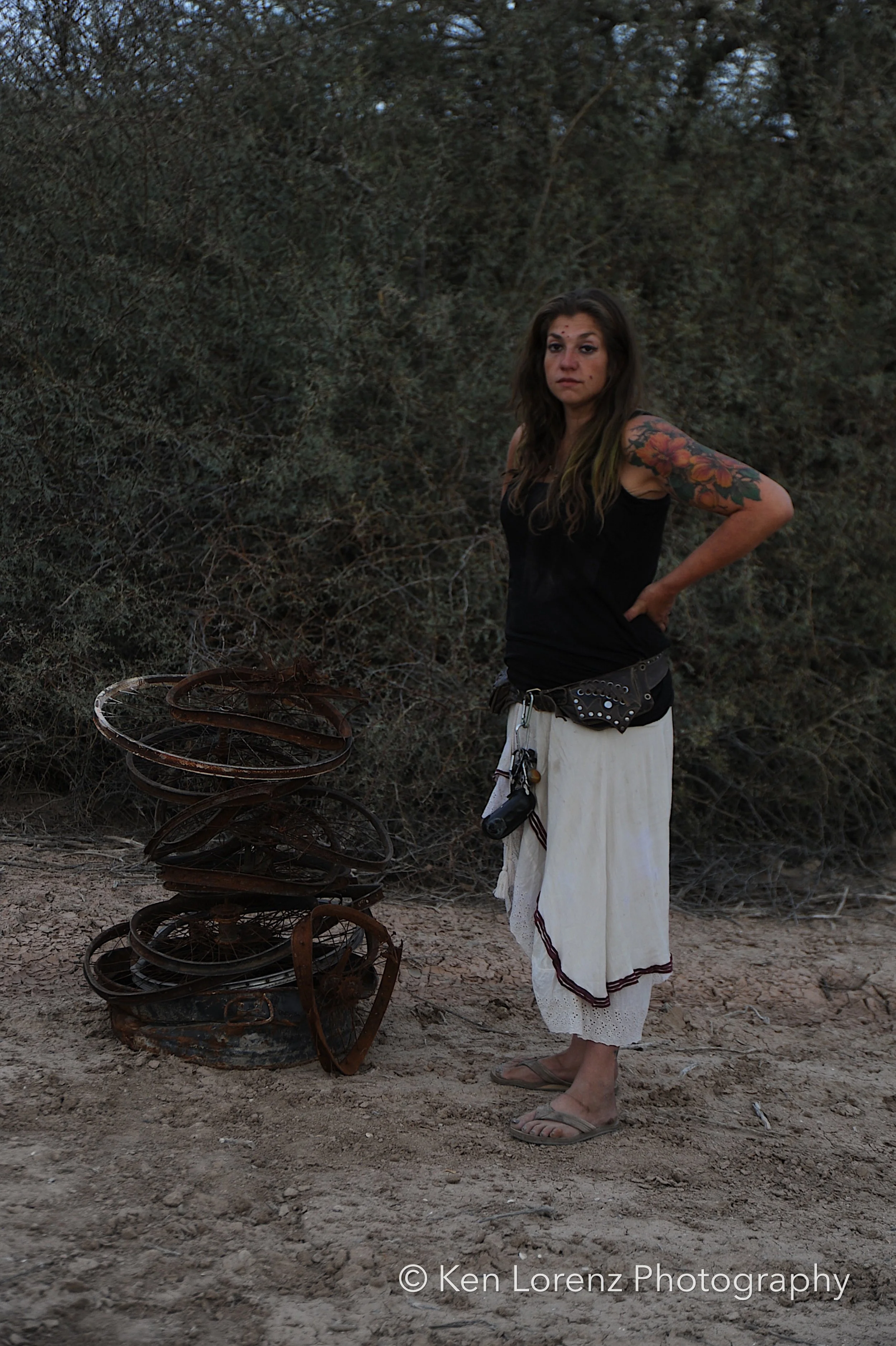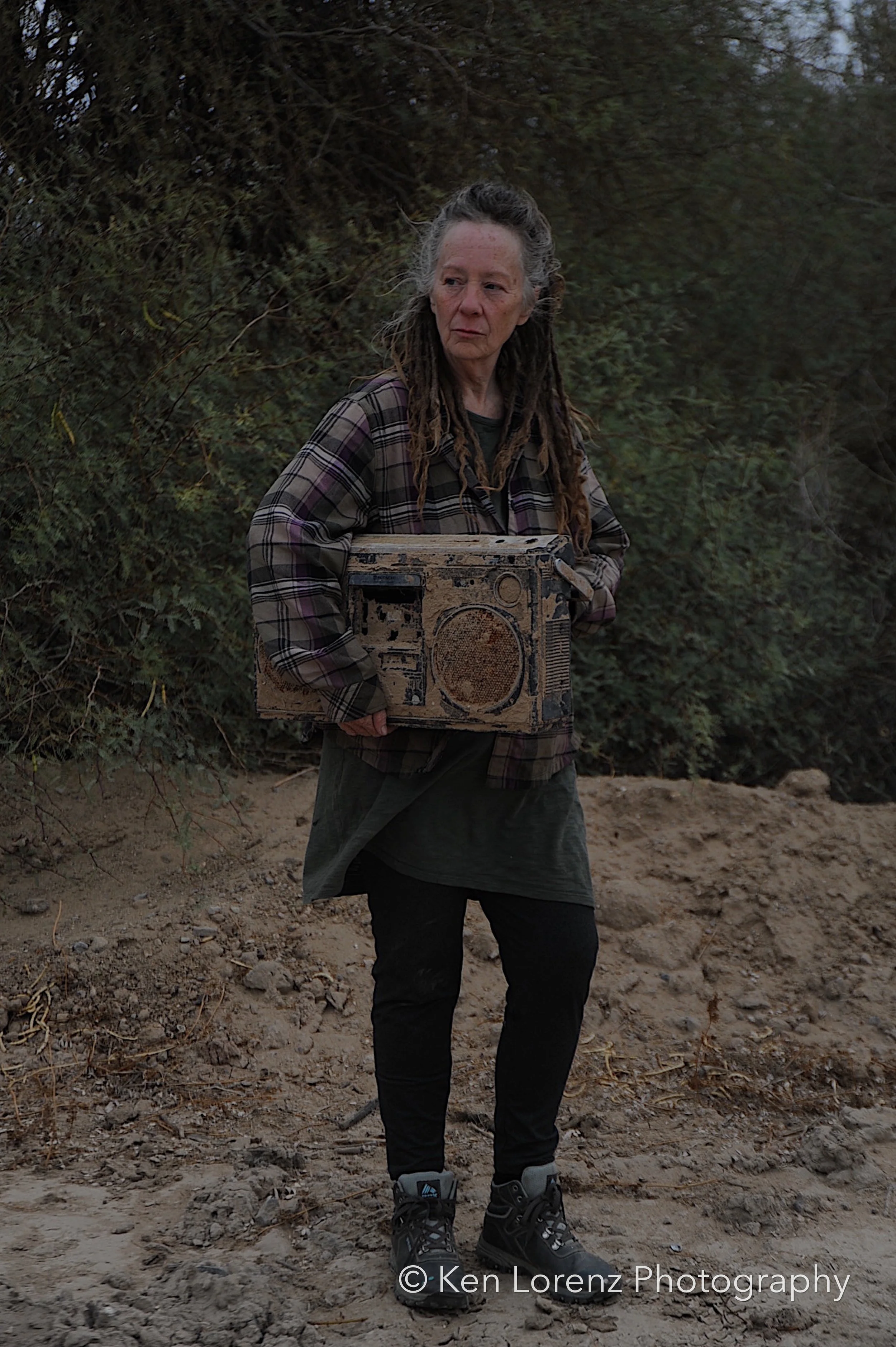Desert Pieces
Niland, California
“The Last Free Place in America”
Color Digital prints
12 of 58 in portfolio. Shot over a four year period. Compositionally each photograph is simply constructed and consists of three features; background desert, a desert piece found lying around the desert and a slabber.
There are 7 splinter portfolios as an offshoot of this main series, “Desert Pieces”.
Those portfolios are: Long Play, The Eloquent Shoe, Framed, My Own Personal Alien, Junk, Parts and Flattened Aerosoles.
Slab City—commonly known as “the Slabs”—is an ungoverned, off-the-grid alternative community made up of transients, squatters, artists, survivalists, and unhoused individuals who have drifted here from across the United States.
Located in the Salton Sea trough of the Sonoran Desert in Imperial Valley, it is perhaps one of the quirkiest and most paradoxical places to photograph—harsh yet strangely captivating. For this photographer, a sixth year of visitation is fast approaching.
To be clear: Slab City does receive package deliveries, and there is no cost to live here. But running water, sewage systems, plumbing, and electricity do not exist unless residents find creative ways to produce their own. And that is precisely what they do—ingeniously adapting to make life, if not comfortable, at least survivable.
After five years of documenting the area, certain patterns emerge. There is, metaphorically speaking, a revolving door of travelers who arrive in September and vanish by June. Why? It might have something to do with the desert summer, when June through August temperatures soar to a sweltering 120°F. The only refuge lies in the Coachella Canal, running east to west along the Slabs, where residents bathe and swim. Yet this reprieve comes with its own dangers—the rattlesnakes that also flourish in the heat.
Combing the Desert Floor for Subject Matter
The Effects of Climate on Junk and Remnants
The desert climate rapidly breaks down material goods through sun-induced degradation and thermal stress from extreme temperature fluctuations. Add to this wind abrasion from sand, along with salt-laden air, and objects succumb to chemical weathering at an accelerated pace.
What makes the Sonoran desert such a fascinating subject for photography is how objects—especially organic matter—transform under these conditions. Intense UV radiation and flash-drying reduce them to brittle shells, while violent temperature swings fracture goods and materials alike. (See Aerosol Spray Can, LP Record Album, The Eloquent Shoe, and Sun-Drenched Book series as examples.) Wind, acting as a natural sandblaster, scours surfaces into abstraction. Salt deposits infiltrate materials, expanding and contracting with changes in moisture, prying objects apart. Meanwhile, the relentless sun discolors, fades, and bleaches objects into strange new forms.
Low humidity accelerates desiccation, leading to cracking, embrittlement, and rust. Intense summer heat strips paint from surfaces, exposing bare material and hastening decay. What was once recognizable becomes fragmented, altered, and unmoored from its original identity.
In this way, the desert itself becomes a collaborator—transforming discarded remnants into objects of abstraction. And for the artist, this weathering is not destruction but an opening: the invitation to see, to reimagine, and to create.
